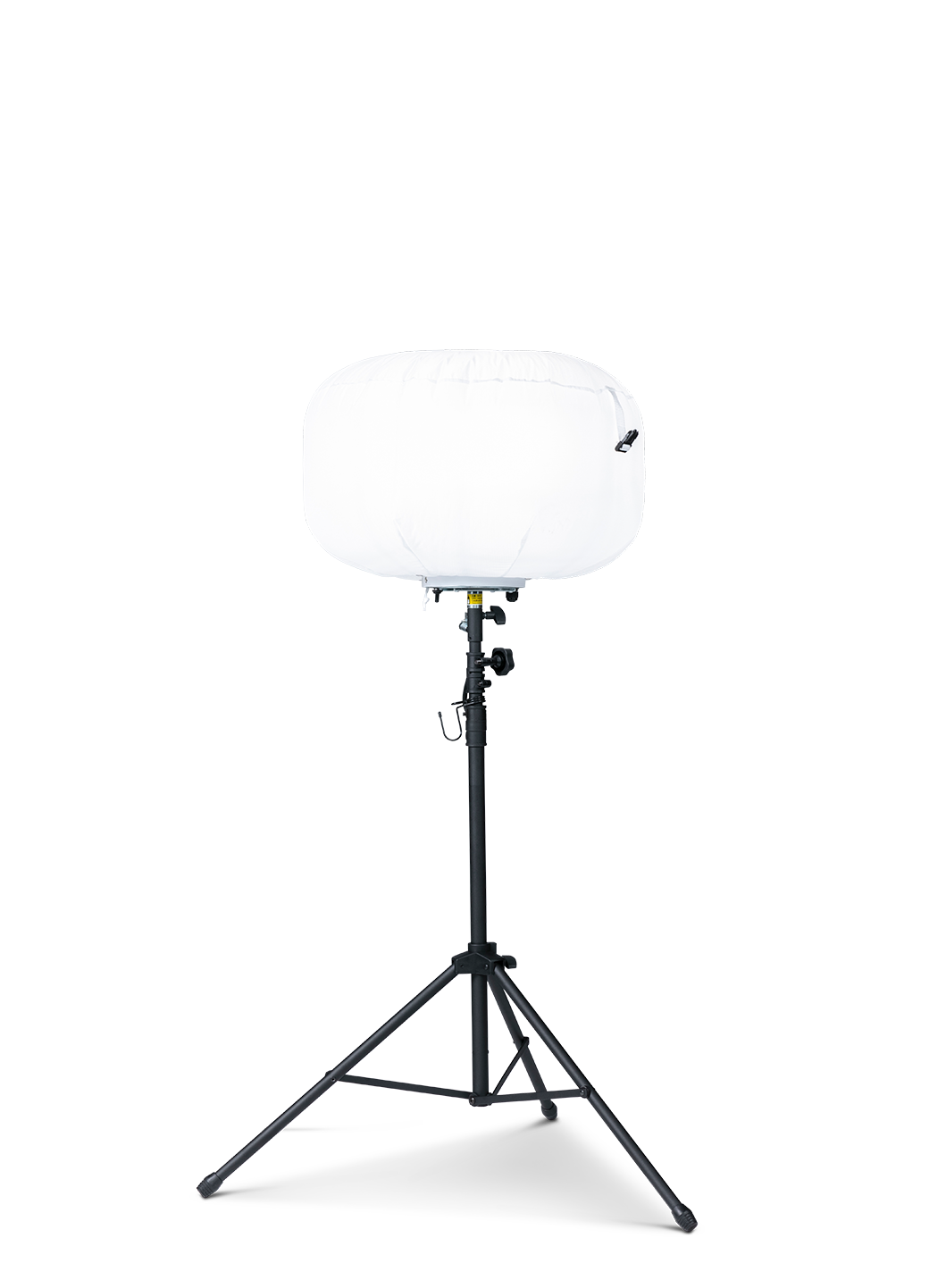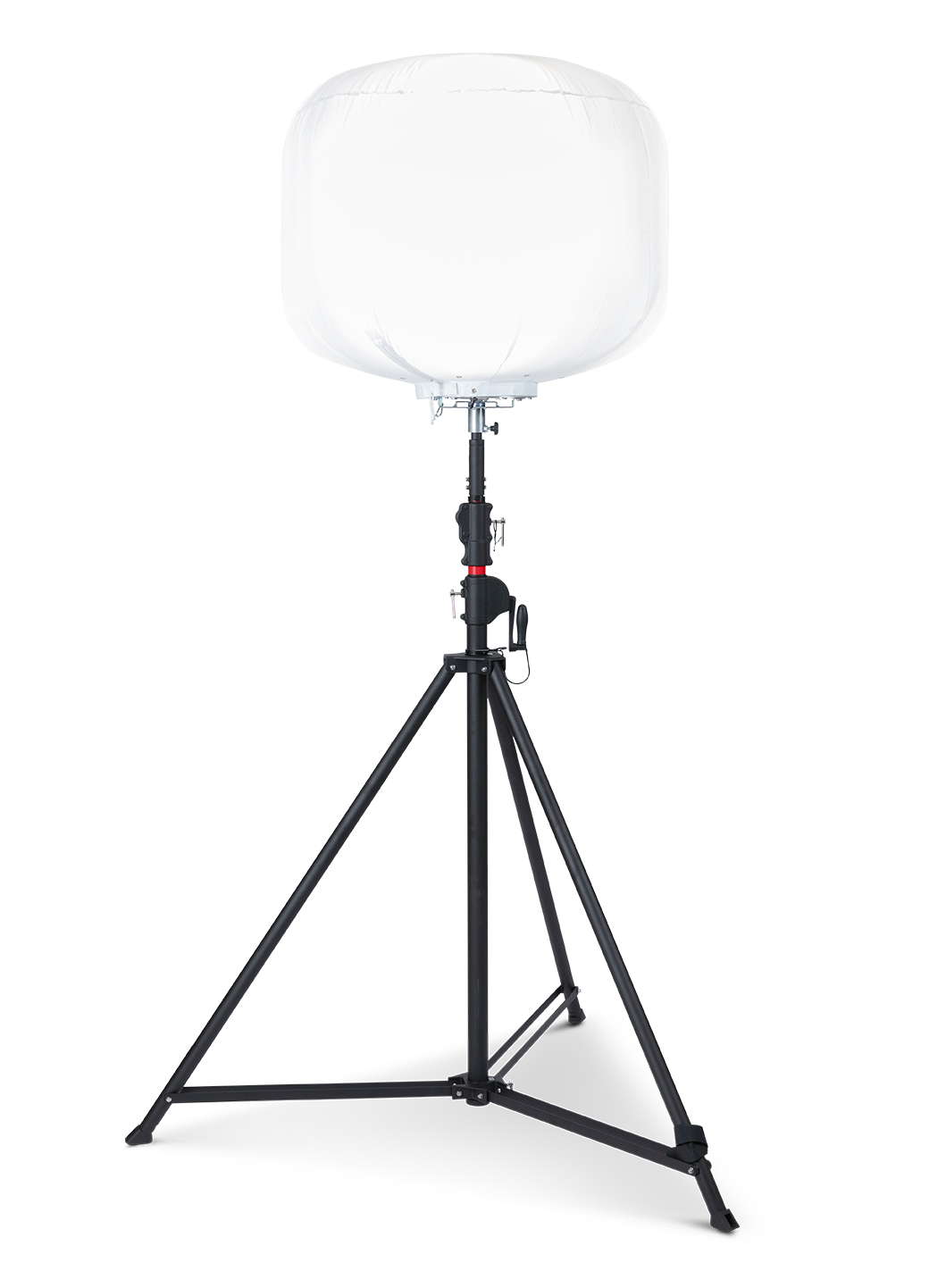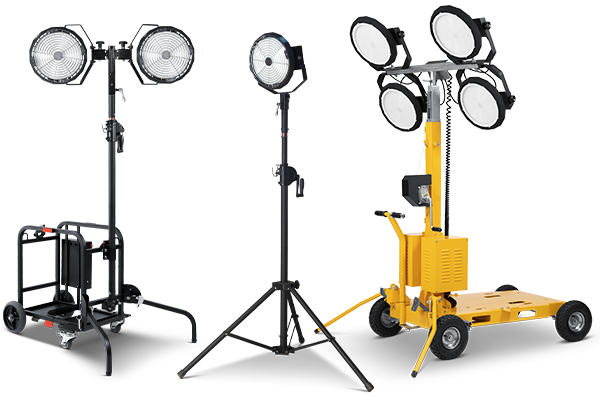In demanding and harsh environments like boathouses and shipyards, traditional lighting equipment often falls short of unique requirements. From glare issues in high-altitude work to durability challenges in humid conditions and the need for uniform illumination over large construction areas, lighting solutions face stringent tests. However, LED balloon lights, with their unique technological advantages, are increasingly becoming the ideal choice to solve these problems, improving operational efficiency and safety. Not only do they provide excellent light quality, but their customizable color temperature also offers great convenience for various operational needs, ushering in a new era for shipyard lighting.
Notably, LED balloon lights have accumulated rich successful experience in other large industrial sectors, such as aircraft maintenance hangars in the aviation industry. This experience demonstrates that the advantages of LED balloon lights can effectively address high-precision operations, large-space illumination, and harsh environmental challenges. We are confident in introducing these successful lighting solutions to shipyards and dry docks, bringing safer and more efficient lighting equipment to shipbuilding enterprises.
I. High Brightness and Zero Glare: Enhancing Work Comfort and Precision
In boathouses and shipyards, workers often perform precise welding, cutting, assembly, and inspection tasks on metal surfaces, slippery decks, or in confined spaces. Traditional lighting equipment, such as high-power halogen lamps or metal halide lamps, typically produce strong direct light, leading to:
- Blinding Glare: When light hits the smooth metal surfaces of a ship or the water, severe specular reflections cause blinding glare. This not only makes workers uncomfortable but also impairs vision, increasing the risk of operational errors. This is a critical flaw for precise shipyard lighting.
- Hot Spots and Shadows: Direct light sources easily create prominent hot spots and deep shadows, making it difficult to detect subtle defects or perform precise tasks, especially around complex ship structures or mechanical components.
- Visual Fatigue: Prolonged work in glare- and shadow-interspersed environments can lead to eye strain, dryness, and even headaches for workers, subsequently reducing work efficiency and safety.
The design of LED balloon lights cleverly solves these issues. Their core advantage lies in the use of a special milky white cover and 360° diffuse light source technology. This design allows light to spread evenly in all directions, creating a soft, non-directional illumination area that fundamentally eliminates glare. This means:
- Soft and Uniform Light: The light is no longer a concentrated “point” but a uniformly distributed “surface.” Even when illuminating highly reflective materials, it won’t cause discomfort, significantly improving visual comfort. It’s worth mentioning that the color temperature of LED balloon lights can be customized, providing the most suitable light for different operational needs (e.g., fine inspection, general assembly, or surface painting). For instance, warmer color temperatures can reduce reflections, while cooler color temperatures aid in detail recognition, which is a significant advantage for shipyard lighting.
- Reduced Shadows and Hot Spots: Diffuse light illuminates objects from multiple directions, effectively filling shadowed areas, making the light distribution across the entire workspace more uniform. No matter where workers are, they receive sufficient and unobstructed illumination, which is crucial for precise weld seam inspections, quality control of hull surface coatings, or circuit assembly tasks.
- Improved Inspection Accuracy: Under soft and uniform light, tiny cracks, corrosion, weld defects, or paint imperfections on the hull surface become clearer, greatly improving inspection accuracy. For example, in maintenance work below the ship’s waterline, clear and glare-free illumination is vital for identifying marine growth or corrosion points.
- Reduced Accident Risk: A clear and comfortable visual environment reduces operational errors for workers, especially when hoisting heavy objects, operating machinery, or navigating complex structures. Glare-free illumination ensures workers have a comprehensive perception of their surroundings, thereby effectively reducing the incidence of industrial accidents.
II. Rapid Deployment and High Mobility: Adapting to Dynamic Site Needs
The operational model of boathouses and shipyards is highly dynamic and temporary. Ship construction, repair, and modification often involve different construction phases and work areas, requiring lighting equipment to be frequently moved and redeployed. Traditional fixed overhead lights or bulky mobile lighting towers often pose the following problems:
- Time-Consuming Deployment: Installing, dismantling, or moving these large lighting equipment typically takes hours or even days and may require lifting equipment or multiple workers, consuming significant human and material resources.
- Lack of Flexibility: Once fixed, the illumination range and angle of these lighting equipment are relatively static, making it difficult to quickly adjust to the illumination needs of different ship sizes or specific work areas.
- Space Occupation: Large luminaires or equipment are cumbersome to move in narrow dry docks or passages and may even hinder the transport of other materials or ongoing construction.
The design of LED balloon lights fully considers these dynamic needs, demonstrating unparalleled rapid deployment and high mobility:
- Setup in Minutes: Most LED balloon light models feature an automatic inflation design. Simply connect to power, and the built-in fan inflates the lamp cover and illuminates it within minutes. This “plug-and-play” convenience greatly saves preparation time, allowing workers to start tasks faster.
- Diverse Deployment Methods: LED balloon lights are lightweight and portable and can be paired with various support systems:
- Tripods: Provide stable high-altitude illumination and can be quickly adjusted in height, suitable for large areas such as ship sides and above decks.
- Mobile Carts/Bases: The wheeled cart design allows LED balloon lights to be easily moved within the shipyard. Whether transferring from one dry dock to another or providing illumination along the length of the ship, they can be quickly positioned.
- Small Handheld Balloon Lights: These lightweight LED balloon lights are convenient for workers to hold for close-range fill light, or can be magnetically attached to metal surfaces, or even hung in confined spaces. They are especially suitable for providing glare-free, soft fill light in narrow environments requiring precise illumination, such as ship interiors, engine rooms, cockpits, or when repairing pipelines and instrument panels, significantly enhancing operational precision and comfort.
- Flexible Adaptation to Different Areas: Whether it’s external ship painting, cable laying inside the cabin, equipment inspection in the engine room, or propeller maintenance at the stern, LED balloon lights can quickly adjust their position according to specific needs, ensuring every work point receives adequate and appropriate illumination, greatly improving construction continuity and efficiency. This flexibility is particularly important for emergency repairs or night-time urgent work, ensuring lighting equipment is always ready, and significantly enhancing overall shipyard lighting efficiency.
III. Durable for Harsh Coastal Environments: Ensuring Long-Term Stable Operation
The location of shipyards and boathouses determines the unique nature of their work environments, which are filled with severe natural and industrial challenges:
- High Humidity: Coastal air contains a large amount of moisture, which can potentially affect metal equipment. Electrical components and casings of traditional luminaires are susceptible to moisture, leading to reduced performance and shortened lifespan.
- Dust and Oil Stains: Ship construction generates large quantities of metal dust, wood chips, welding fumes, as well as chemicals like engine oil and fuel. These contaminants can enter the interior of luminaires, affecting their heat dissipation and electrical safety.
LED balloon lights are designed with these harsh conditions in mind, thus possessing excellent industrial-grade protection capabilities:
- High IP Protection Ratings: Most professional-grade LED balloon lights comply with IP55 to IP65 or even higher protection ratings. This means:
- IP55: Effectively prevents dust ingress and can withstand low-pressure water jets from any direction, sufficient for daily humidity and rain.
- IP65: Offers a higher level of dust protection, completely preventing dust ingress, and can withstand low-pressure water jets from any direction, making it ideal for use in areas of ship painting, cleaning, or where splashing liquids may occur.
- Stable and Reliable Operation: These protective features collectively ensure the durability and reliability of LED balloon lights in the extreme environments of boathouses and shipyards, greatly reducing the frequency of maintenance and replacement costs due to equipment failure, and ensuring the continuous stable operation of the lighting system, preventing construction delays due to lighting interruptions.
IV. High Energy Efficiency and Low Maintenance Costs: Achieving Economic Benefits
In large boathouses and shipyards, the energy consumption and maintenance costs of lighting facilities are significant components of operating expenses. Traditional lighting equipment, such as high-pressure sodium lamps or metal halide lamps, generally have high energy consumption and short lifespans, leading to:
- High Electricity Bills: Traditional luminaires have relatively low lumen efficacy, requiring more power to achieve the desired illuminance, especially in 24-hour operations, accumulating substantial electricity costs.
- Frequent Bulb Replacement: Traditional bulbs typically have a lifespan of only a few thousand to ten thousand hours, requiring regular replacement, which not only increases bulb procurement costs but also incurs labor costs for high-altitude work and downtime.
- Waste Disposal: Some traditional bulbs contain harmful substances like mercury, and disposing of discarded bulbs incurs additional costs and compliance with environmental regulations.
LED balloon lights demonstrate significant energy efficiency and low maintenance costs in this regard, bringing substantial economic benefits to shipyards:
- Exceptional Energy Efficiency: LED technology is one of the most energy-efficient lighting technologies available today. Professional-grade LED balloon lights typically achieve 150 lumens/watt or higher luminous efficacy, meaning they produce more light with less power. Compared to traditional lighting, they can save 50% to 80% in energy consumption, significantly reducing electricity expenses.
- Ultra-Long Lifespan: The lifespan of LED chips typically exceeds 50,000 hours, with some even reaching 100,000 hours. This far surpasses the lifespan of traditional bulbs (usually 10,000-20,000 hours). An ultra-long lifespan means:
- Extremely Low Replacement Frequency: In many cases, LED balloon lights, once put into use, may not require replacement throughout the entire project cycle or even for several years, greatly reducing the frequency of maintenance work.
- Reduced Labor Costs: It reduces the frequency and cost of high-altitude work and equipment rentals (e.g., lifts), significantly lowering labor costs.
- Reduced Downtime Losses: No need to interrupt operations for luminaire replacement, ensuring continuous production efficiency.
- Environmentally Friendly: LED balloon lights do not contain harmful substances like mercury or lead, resulting in less environmental pollution after disposal, aligning with modern industrial environmental requirements.
- Reduced Overall Operating Costs: Combining energy savings, reduced maintenance costs, and extended equipment lifespan, LED balloon lights can bring significant reductions in Total Cost of Ownership (TCO) for shipyards, demonstrating substantial economic benefits in long-term operations.
V. Large-Area Uniform Illumination: Eliminating Blind Spots
Boathouses and shipyards typically have tall spaces and vast work areas, from the ship’s keel to towering masts, from spacious decks to dense cabins, all requiring illumination that provides sufficient illuminance and uniform light distribution. Traditional point light sources or spotlights have obvious limitations in such environments:
- Uneven Illuminance: The concentrated beam of spotlights easily creates high-brightness areas in the illuminated zone, while producing noticeable dark areas or shadows around, leading to severely uneven illuminance.
- Numerous Dead Zones: The complex structures of ships (such as brackets, keels, and mechanical equipment) block light, creating numerous illumination dead zones. These areas are often critical for inspection and assembly but do not receive adequate illumination.
- High Luminaire Quantity Demand: To address uneven illuminance and dead zone issues, traditional solutions often require installing a large number of luminaires, increasing initial investment and energy consumption.
LED balloon lights, with their 360° omnidirectional diffuse function, perfectly solve these challenges, providing unprecedented large-area uniform illumination:
- Truly “No Dead Zone” Illumination: The light from balloon lights disperses spherically in all directions, able to bypass obstacles and effectively illuminate areas difficult to reach with traditional lighting. Whether it’s the bottom of the hull, the intricate pipelines inside the cabin, or elevated work platforms, all areas can be covered by soft light, eliminating annoying shadows and illumination blind spots.
- Improved Overall Illuminance Uniformity: By reducing hot spots and shadows, balloon lights make the illuminance distribution across the entire workspace extremely uniform. This is particularly beneficial for shipyards requiring large-area simultaneous operations, where all workers can work under equally high-quality illumination conditions, avoiding inefficiencies or safety hazards caused by insufficient light.
- Reduced Number of Luminaires Required: Since a single balloon light can provide a wide and uniform illumination range, shipyards can reduce the total number of luminaires required, lowering equipment procurement costs and installation complexity.
- Suitable for Various Scenarios: Whether it’s the overall construction of large vessels, block assembly, hull sandblasting, derusting, painting, or routine maintenance and night work in dry docks, LED balloon lights can provide stable and reliable overall illumination, ensuring all tasks proceed smoothly.
Conclusion
In summary, the application of LED balloon lights in boathouses and shipyards is not merely an upgrade of lighting equipment but a revolutionary enhancement of the overall work environment and efficiency. It addresses the unique needs of the maritime and shipbuilding industries, providing multiple practical values:
- Visually Friendly: Through glare-free, soft diffuse light, it greatly reduces the interference of harsh light and specular reflections on workers’ vision, improving work comfort and precision. The customizable color temperature feature further optimizes the visual experience.
- Convenient Deployment: Its rapid inflation, lightweight portability, and versatile support options allow it to flexibly adapt to the highly dynamic and temporary construction models of dry docks and shipyards, significantly saving time and labor costs.
- Durable and Reliable: With high-standard waterproof and dustproof capabilities, it ensures lighting equipment can operate stably long-term in humid and heavy industrial environments, reducing the hassle of frequent maintenance.
- Energy-Efficient and Cost-Saving: LED technology brings high lighting efficiency and an ultra-long lifespan, significantly reducing energy consumption and long-term operational and maintenance costs, achieving considerable economic benefits.
- Wide Light Coverage: The 360° uniform diffusion function eliminates dead spots and shadows of traditional lighting, ensuring no illumination blind spots throughout the construction area, improving overall operational safety and efficiency.
Our successful experience with lighting in aviation hangars demonstrates the excellent performance of LED balloon lights in high-standard industrial environments. For boathouses and shipyards striving for excellent operational quality, efficient construction management, and cost optimization, investing in LED balloon lights is undoubtedly a wise and forward-thinking choice. They will bring clearer vision, a safer environment, higher efficiency, and lower operating costs to your repair and construction operations, elevating the lighting standards of boathouses and shipyards to a whole new level.
Related Article Links:Yuang Light LED Balloon Lights: Premier Aircraft Maintenance Lighting Equipment
Links related to aircraft hangar maintenance facilities:‘Aircraft Hospital’ Maintenance Hangars Revealed! How Evergreen Aviation Technologies Earns European Airlines’ Approval with Three Key Strengths











